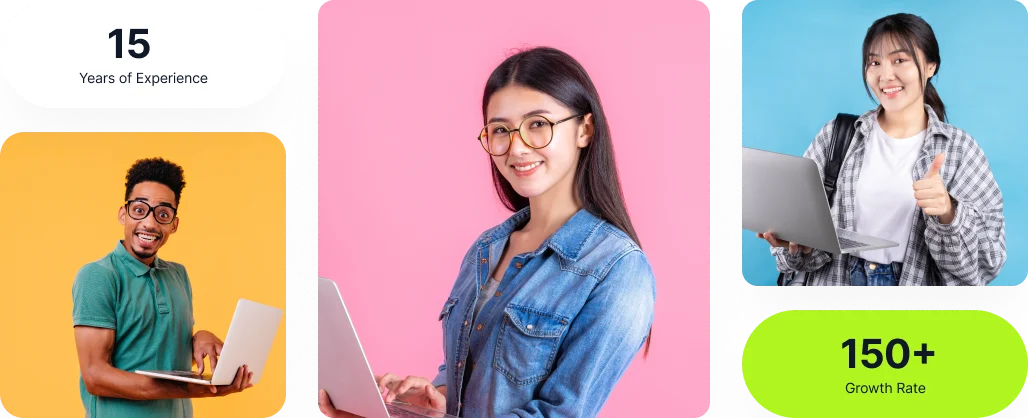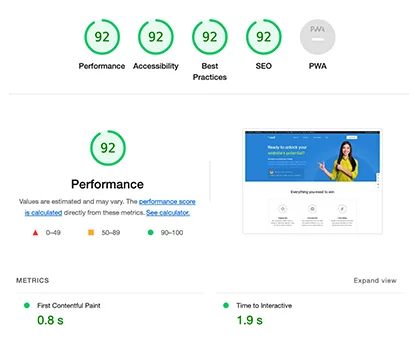4 Types of Influencers: Choosing the Right Type for Your App Campaign

In the dynamic world of digital marketing, influencers are a prime force shaping consumer behavior and brand perception. One unique thing about influencer marketing is that it’s a powerful tool to improve the campaign. Each influencer category brings unique advantages to different audiences. In this blog post, we will explore various types of influencers and help you decide which one suits your campaign needs best.
What is an Influencer?

Let’s shortly understand this definition. An influencer is someone who can impact the opinions, actions, and decisions of others within a specific niche or industry. Influencers have built a reputation based on knowledge, expertise, or unique perspective. These influencers have made a public image based on their knowledge, expertise, and unique perspectives. Social media influencers use their platforms to engage followers, creating personal branding. Influencers are known for their expertise in particular niches to persuade their users. We will look at the following category to decode the structure of influencers.
What is Influencer Marketing?

Influencer marketing involves using influencers as a part of your brand’s marketing campaign to promote a product, reach target consumers, increase brand exposure, hit certain KPIs, and more.
The Role of Influencer Marketing in Mobile Marketing
Understandably, influencer marketing is traditionally considered digital marketing. Influencers can also play a prominent part in mobile marketing by promoting apps, services, and products within their platforms.
Drive app downloads: You can use the power of influencers to create creative and engaging content around your app. Influencers can showcase the benefits and features of your app. Sharing opinions and guidance can encourage followers to download the app, driving more app downloads.
Boost user engagement: Influencers can use marketing tactics like gifts, challenges, contests, and giveaways for your app. These tactics will create overall hype for your app. Influencers with engaged and active audiences will increase interaction and engagement on the app.
Increase brand awareness: Influencers have solid fan bases and trust their influencers’ recommendations. By collaborating with influencers, app companies can increase their audience and brand visibility, reaching potential users unaware of the app.
Target-specific audiences: Influencers specialize in various niches; influencer collaboration can influence your target audience. With the help of influencers, you can effectively get in touch with specific mobile users. It will increase the chances of conversion and retention for your app.
Building user trust: Influencers can showcase confidence in a product and services through effectiveness and quality. It is generally seen that when influencers recommend an app, their followers will recognize this as a trusted recommendation. In return, it will increase your app’s credibility and trust.
The Four Types of Influencers for Influencer Marketing
There are four main different types of social media influencers whose follower count can be defined:
- Nano Influencers – 1-10k followers
- Micro-Influencers – 10-100k followers
- Macro Influencers – 100k-1 Million followers
- Mega Influencers – 1 Million+ followers
1. What is a Nano Influencer?
Nano influencers are defined as having between 1k and 10k followers on their social media channels. A smaller audience does not mean their audience base is not strong, as they are small in groups, but they highly trust their opinions and recommendations. With small audiences, Nano influencers can increase the high engagement rate for services and products.
Influencers are often perceived to have a following within a particular community related to their career, location, and specific online niche.
“Is the Use of Nano Influencers Suitable for My Brand?”
If you have a budget constraint and don’t want to burn your cash in an open fire, then nano influencers are the perfect set for your brand. Nano influencers are less expensive than micro-influencers and will increase your app’s engagement rate. Nano influencers are also cost-effective for testing your marketing within a new audience demographic.
2. What is a Micro-Influencer?
Micro-influencers are categorized as followers ranging between 10k-100k followers. Even though micro-influencers have more followers than nano-influencers, they still have to maintain authenticity and trust with their audiences. Often, micro-influencers get categorized into particular jobs, hobbies, and locations. Micro-influencers build their followers based on their trust and content. Micro-influencers are generally considered experts because they provide a range in a specific niche.
3. What is a Macro Influencer?
Macro Influencers have followers ranging between 100,000 to one million followers. These influencers have a greater reach than micro and nano influencers. Macro influencers are more seen as content creators and make themselves famous with the help of social media. These creators can be vloggers, bloggers, Instagram influencers, podcasters, and Instagram influencers. Macro influencers are different from mega influencers in terms of online growth and help in sponsored content. Macro influencers will have higher engagement levels than mega influencers but less engagement in a specific niche than nano or micro-influencers.
Macro influencers will have higher engagement levels than mega influencers but less engagement in a specific niche than nano or micro-influencers.
4. What is a Mega Influencer?

Mega influencers have over 1 million followers and are usually celebrities with a large online following. Mega influencers have celebrity-like status, so it would be expensive to work with them. Their followers are too large, and it will be difficult to operate within one niche. Their audiences have different demographics and regions, and they may not be as efficient as micro-influencers.
For example, Ronaldo would be considered a mega influencer as their followers are 600+ million. Ronaldo dominates not only in the football field but also in the digital sphere. Because of the huge fan following, Ronaldo earns $3.23 million per Instagram post. Ronaldo also regularly posts on his IG, so it is easy to keep the users engaged.
Conclusion
In conclusion, the diverse landscape of influencers offers many choices for brands looking to leverage this powerful marketing channel. By understanding the nuances of each influencer type and aligning your choice with your campaign goals, you can maximize the impact of your influencer marketing efforts and forge meaningful connections with your target audience.

